Search Images
Browse Content (p. 1148)

Image
Coin of Justinian II
A gold coin of Byzantine emperor Justinian II (r. 685-95 & 705-11 CE). This example is from his second reign. (Classical Numismatic Group, Inc. http://www.cngcoins.com)
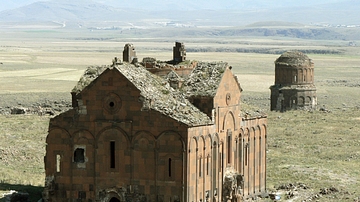
Image
Ani Cathedral, Aerial View
Th ruins of the 10th century CE Ani Cathedral, once capital of medieval Armenia (modern-day eastern Turkey). It was designed and built by the celebrated architect Trdat the Builder (c. 940s - c. 1020s CE).
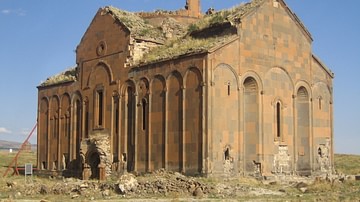
Image
Ani Cathedral Exterior
Th ruins of the 10th century CE Ani Cathedral, once capital of medieval Armenia (modern-day eastern Turkey). It was designed and built by the celebrated architect Trdat the Builder (c. 940s - c. 1020s CE).
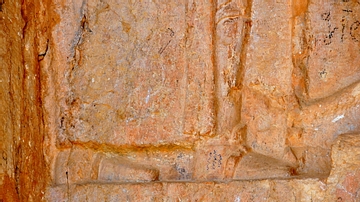
Image
Shoes Detail, Tombs of Qizqapan
Detail of the relief carved at the façade of the rock-cut tombs of Ashkawt-i Qizqapan (Kurdish: The Cave of the Ravisher or the Cave of the Raped/Abducted Girl). The lower legs of the man who stands on the left side appear here. He wears...
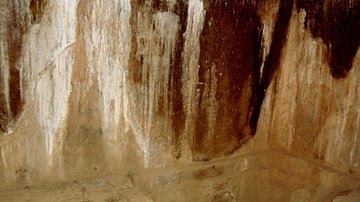
Image
Burial Chamber, Rock-Cut Tombs of Qizqapan
This is the left burial chamber at the rock-cut tombs of Ashkawt-i Qizqapan (Kurdish: The Cave of the Ravisher or the Cave of the Raped/Abducted Girl). This rectangular coffin was carved into the rocky floor, which was hollowed out. Probably...
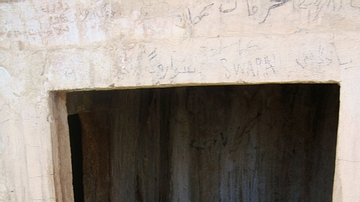
Image
Doorway, Rock-Cut Tombs of Qizqapan
The square doorway at the façade of the rock-cut tombs of Ashkawt-i Qizqapan (Kurdish: The Cave of the Ravisher or the Cave of the Raped/Abducted Girl) leading to the central burial chamber (shown). The square entrance to the central chamber...
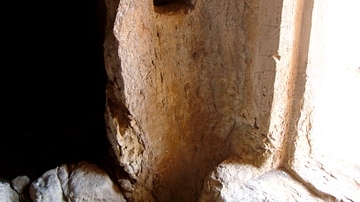
Image
Door Detail, Rock-Cut Tombs of Qizqapan
The doorway and entrance to the rock-cut tombs of Ashkawt-i Qizqapan (Kurdish: The Cave of the Ravisher or the Cave of the Raped/Abducted Girl) lead to a central burial chamber. The latter, through a similar square doorway (left), leads to...
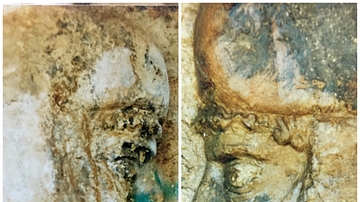
Image
Facial Details, The Rock-Cut Tombs of Qizqapan
A close-up image of the two standing men of the relief at the façade of the rock-cut tombs of Ashkawt-i Qizqapan (Kurdish: The Cave of the Ravisher or the Cave of the Raped/Abducted Girl). The Median headdress (bashlyk) and the piece covering...
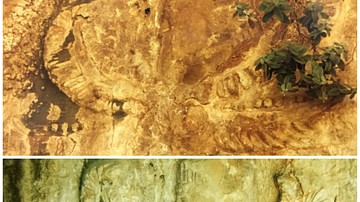
Image
Ahura Mazda, The Rock-Cut Tombs of Qizqapan
Two close-up images of “Ahura Mazda” at the façade of the rock-cut tombs of Ashkawt-i Qizqapan (Kurdish: The Cave of the Ravisher or the Cave of the Raped/Abducted Girl). The upper image dates to June 14, 1999, while the lower one was shot...
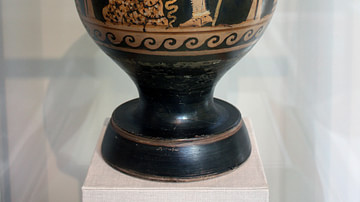
Image
Oedipus & the Theban Sphinx
Bell-Krater (mixing bowl) depicting the Theban Sphinx and Oedipus in the guise of a satyr. Greek, South Italian, Paestan, red-figure, 3rd quarter of the 4th century BCE.
Attributed to Python. (Metropolitan Museum of Art, New York)